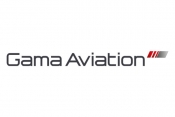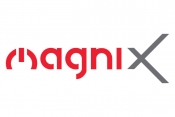COURT CASE CAUSES SAFETY REVIEW OF RAF NORTHOLT
Friday 23rd January 2015
• The safety of all civilian aircraft using government owned military aerodromes is the responsibility of the Civil Aviation Authority.
• CAA now responsible for deciding if RAF Northolt is safe for use by civil aircraft.
• As a result taxpayers could potentially be facing a bill in excess of £20 million.
• RAF Northolt admitted (by MOD and CAA) that it does not comply with Civil Aviation safety standards.
• Ruling impacts all civilian flights using military aerodromes, including 12,000 civilian flights a year at RAF Northolt.
In a landmark ruling, the Ministry of Defence (MOD) and the Secretary of State have been told that the Civil Aviation Authority (CAA) is the statutory regulator required to determine safety standards for civilian aircraft using government owned military aerodromes.
Previously, as part of a policy of attracting 12,000 more business jets a year to RAF Northolt in west London, Ministers had repeatedly argued that they didn't need to meet stricter, costlier civilian safety standards - only military ones - and that the CAA had no regulatory powers at military aerodromes.
This meant that smaller private airports reliant on business jets were being significantly undermined, as RAF Northolt became a competitor without incurring the higher costs of complying with civilian safety standards.
London Oxford and Biggin Hill Airports, represented by John Steel QC, lodged an application for a Judicial Review, arguing that military aerodromes should be regulated by the CAA and subject to equivalent safety standards that would apply to civilian airports, as mandated by the UK Civil Aviation Authority (UK CAA).
This Judicial Review has now clarified the position - the CAA and the Secretary of State for Transport are responsible for the safety of all civilian flights using RAF Northolt and other military aerodromes in the U.K. The safety of military flights remains the responsibility of the Military Aviation Authority.
In evidence submitted to the Judicial Review, it has been suggested that the costs to the taxpayer of meeting equivalent safety standards as would apply at a civilian airport would run into the tens of millions. For example, the MOD submitted evidence that suggested that measures to address a lack of adequate emergency runway run off areas to allow for potential under/over-shooting aircraft would alone cost in excess of £21 million at a time of defence cutbacks.
The Judgment is also likely to have a major impact on an ongoing E.U competition investigation concerning State Aid, and requested by London Oxford and Biggin Hill Airports. Should the Commission finds that the MOD have been unfairly competing with the private sector the compensation bill could run into many tens of millions.
In welcoming the Judgment, Will Curtis, Managing Director of Biggin Hill Airport in SE London, said 'Despite a serious crash in 1996 in which an aircraft overran the runway and collided with a vehicle on the A40 trunk road, RAF Northolt evidently believed it was entitled to bypass many internationally accepted aviation safety measures - measures that civil airports such as ours are required to maintain. Lower safety standards at military aerodromes are unacceptable, not only for those in the aviation industry, but also for passengers and those in the surrounding community on the ground.
The Judgment now for the first time clarifies that the CAA has statutory responsibility for safety in relation to use of RAF Northolt by civil aircraft. This is long overdue as the relevant legislation goes back to 1982. I am sure that they will want to quickly consider their position regarding the safety standards for civil aircraft at RAF Northolt."
Andi Pargeter, Managing Director of London Oxford Airport said: "Today 85% of flights at RAF Northolt are civilian. They can continue to operate as a military airport accepting military flights, but if they want to continue accepting civilian flights, they may need to put in costly new safety measures. The question for the MOD now is will they use even more taxpayers money in order to distort the market and compete with small private businesses that support hundreds of highly skilled engineering jobs?"
Will Curtis added:
"Using taxpayers' money to compete with civil airports serving the same customers, is simply not equitable. As military and government flights at RAF Northolt have declined, replacing them with 12,000 civilian flights a year means it is now effectively a civil airport via the back door, despite the Airports Commission stating that it sees no long term role for it."
John Steele QC (acting for Biggin Hill) and Will Curtis (MD Biggin Hill) are available for background briefings.
Please contact telephone: 01959 578519
1. Biggin Hill Airport Ltd, a subsidiary of Regional Airports Ltd is just 12 miles from central London and offers award winning VIP handling services, extensive hangarage, support and maintenance services for all ranges of business jets. A designated UK Port of Entry with no runway slots and now with an exclusive six-minute London Heli-Shuttle transfer service to and from the heart of London.
2. London Oxford Airport is wholly owned by the Reuben Brothers. Their investment activities include private equity, real estate ownership and development. Businesses include, data centres, race courses, media, public houses, hotels, mining and metal storage. At the end of February 2012 the Reubens purchased the London Heliport at London Battersea, the UK's only CAA licensed heliport. The Heliport is a 22-minute helicopter ride from London Oxford Airport. London Oxford Airport has been the fastest growing airport for private business aviation in the United Kingdom over the last five years and aspires to be recognised as a new option for commercial airline services within the Thames Valley region, North West of London.
Latest News

Tuesday 4th March 2025
Gama Aviation sees increasing business aviation traffic through Sharjah International Airport







Get Social
Twitter Linked in Facebook Instagram